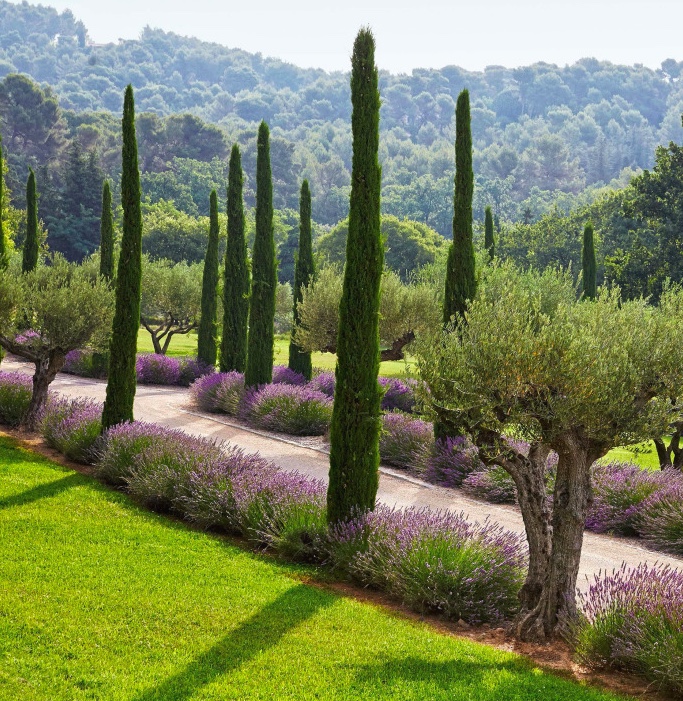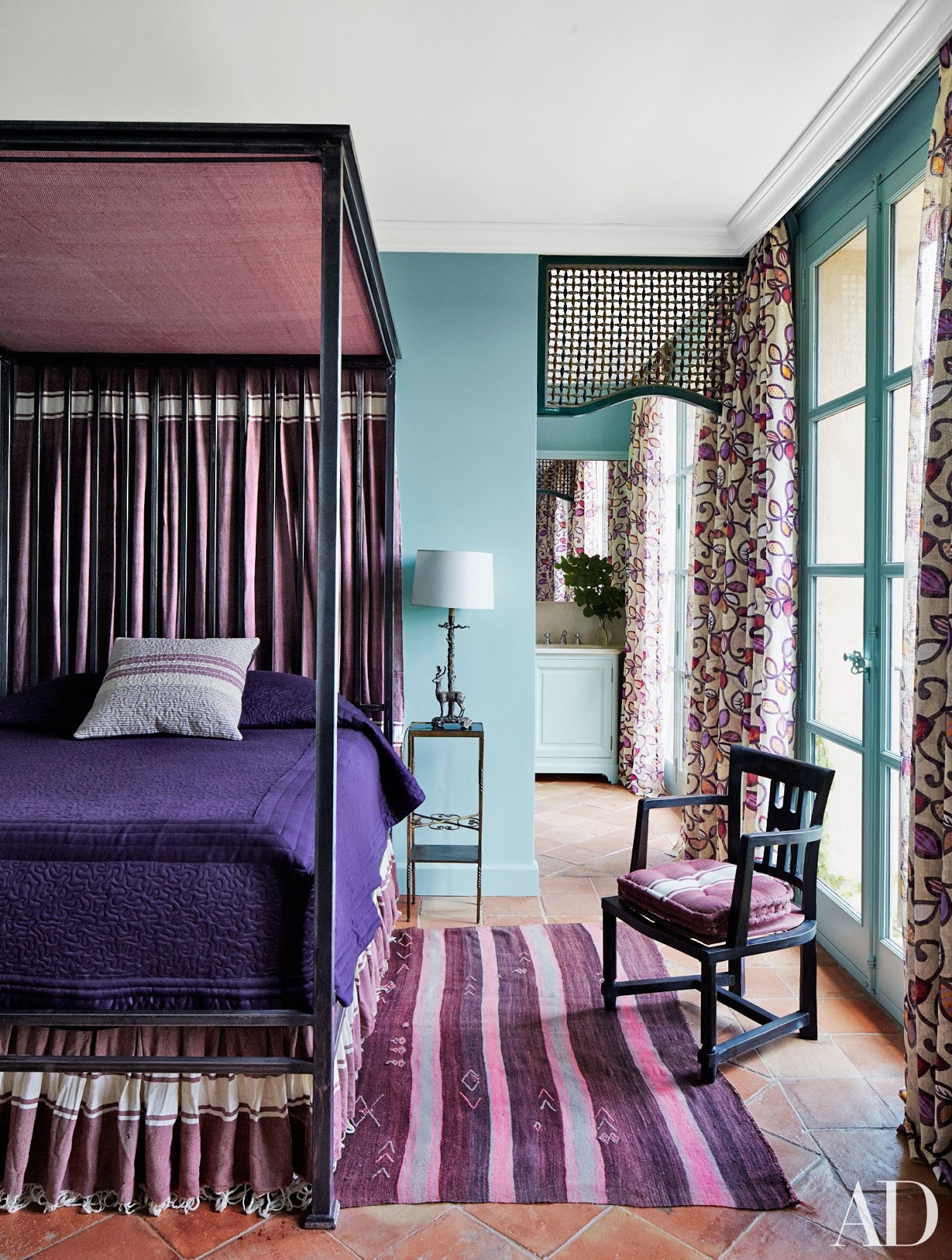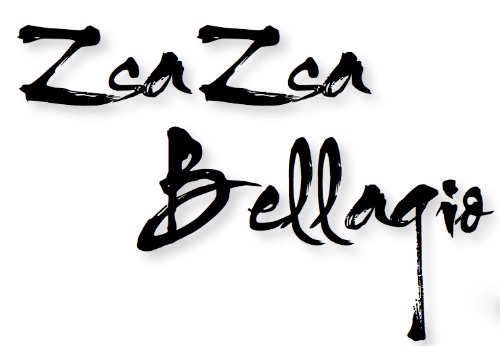
“Domaine Chanceler”
This is a real treat: the glamorous vacation home of Aix-en-Provence-born celebrity hairstylist Frédéric Fekkai and his wife Shirin von Wulffen’s lavender-filled estate in the South of France.

The family’s vintage Mercedes-Benz convertible.
The family spend summers here with their children Philip and Cecilia.

Fekkai and Von Wulffen with their children Philip and Cecilia on the entrance-court steps, which are flanked by boxwood in monumental Anduze pots.
The house’s façade features a traditional Provençal ocher finish and gray shutters.
Working with architect Jean Paul Bernard, decorator Jean-Louis Raynaud, and landscape designer Marco Battaggia, Frédéric and Shirin renovated the 17th-century property as their family retreat.
Photography by Simon Watson for Architectural Digest

The living room’s chandeliers and cocktail table are from the 1950s, while the velvet-clad armchairs are 19th century; the Saharan rug is woven with rope and camel hide.

The pillars marking the end of the entry drive were hand-cut from local stone in the 17th century.

Sunburst mirrors, most sourced from dealers in the region, are arrayed in the entrance hall.

Reclaimed stone from Burgundy paves a dining terrace; the cotton tablecloth is Provençal.

Green terra-cotta vessels from Morocco punctuate the pool area.

Jean-Louis Raynaud designed the master bedroom’s iron canopy bed, which has French-linen drapery and a vintage Portuguese embroidered coverlet; the 1930s pendant light was a flea-market find, and the rug is Saharan.

An arcade of trellised roses leads to the pool.

A Syrian ebony table with bone inlay rests on a Saharan carpet in the library; the birdcage artwork next to the window is by Troy Abbott.

Lavender carpets the olive orchard.

In the new double-height solarium, built by Jean Paul Bernard, a Marie Christophe chandelier overlooks a 17th-century convent table and an antique Provençal armoire topped by varnished terra-cotta olive jars from the 19th century.

Terraced rows of boxwood spheres border the entry court.

The kitchen features reclaimed stone pavers from Burgundy and a 17th-century Provençal sink.

Gracing a guest room is a carved-cedar bed that was conceived by Jean-Louis Raynaud, crafted in Morocco, and outfitted with hand-woven Berber fabric.

The entrance drive is lined with olive trees, lavender, and Provençal cypress, a symbol of welcome.

Yves Saint Laurent–inspired curtains and walls finished in a Provençal blue enliven another guest room; the bed is by Jean-Louis Raynaud, the bronze animal lamp is 19th century, and the carpet is from Morocco.

The olive orchard is underplanted with rows of fragrant lavender.

A matching antique settee and armchair covered in a Rubelli velvet stand in the living room; Jean-Louis Raynaud designed the mirror above the 1940s console, and his son, artist Aurélien Raynaud, created the gorilla sculpture, which is poised near two 19th-century artworks depicting Rome.

Large cypresses add drama to a lawn.
Photography by Simon Watson for Architectural Digest


